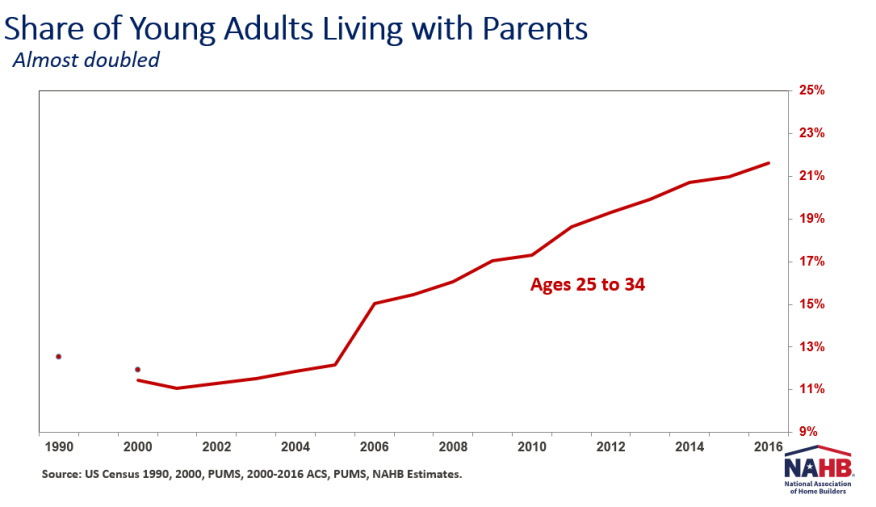National Housing Policy Has Failed to Support New–Home Construction
August 2019
Accessory dwelling units may represent a missing piece of the puzzle, says NAHB economist.
By Robert Dietz

Alongside supply–side factors like the labor shortage and rising regulatory costs, the lackluster recovery for single–family construction in recent years is due to weaker–than–expected gains for household formation. From 2000 to 2006, the net growth in U.S. households averaged just under 1.4 million a year. In the years before and just after the Great Recession, 2007 through 2011, household formation fell to an average of 600,000 a year. Given the severity of the recession, the drop–off for the growth of renter– and owner–occupied households was not a surprise. However, from 2012 to 2017, household formations averaged only 1 million per year, despite the fact that the U.S. population increased from 282 million in 2000 to 329 million in 2017.
So where are these missing households? Some are found literally at home–their parents' homes. NAHB research shows the share of young adults aged 25 to 34 has nearly doubled over the past decade and a half. In 2000, a little more than 11% of individuals in this age range lived with their parents. The share increased during the recession, as the unemployment rate increased. However, the rate continued to rise in recent years despite more solid economic conditions–in 2016, the rate increased to almost 22%. This change in living conditions, which is likely connected to the rise in student loans, reduced cumulative household formation by several million from 2012 to 2017 and transformed many older parents into implicit landlords.
Another trend has picked up speed in recent years: auxiliary (or accessory) dwelling units, or ADUs. These housing units are traditional rentals found in garages, attics, basements, or other parts of an existing home. In the current environment, where government regulations and fees impede new construction growth, ADUs provide a means of adding additional housing supply to meet market demand. Of course, many of these units are unpermitted and undocumented. The U.S. has a wealth of housing data from government agencies like the Census Bureau and HUD. But there is not good data on ADUs, and given the under–the– table operation of some of these rentals, this is not a surprise. Some informal estimates place the total number of ADUs from several hundred thousand to up to a few million.
So where are many of the households that should have formed but, according to official data sets, have not? It's very likely that ADU use accelerated in recent years due to rising housing cost burdens, for both rental and owner–occupied housing. This use includes both explicit ADUs (small–unit rentals) and implicit ADUs (parents housing adult children). While this expansion of the housing stock has brought some increased business to remodelers, it also marks a failure of national housing policy that new, permitted, and authorized construction cannot fill the current need for housing.
Source: Builders